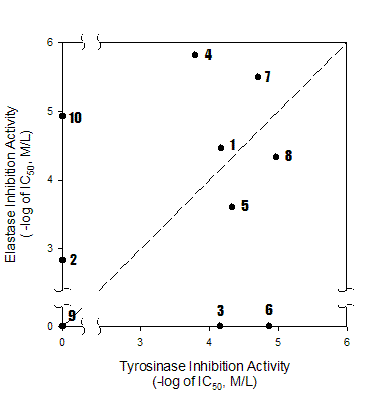Friday, 18 May 2007
3rd Floor Hall (Pfahler Hall)
455
Potential skin anti-aging activities of selected plant-derived phenols
Skin aging process includes both inflammation and pigmentation pathways, which are important targets for novel topical products. Frequently, elastase inhibitory activity is used to measure anti-inflammatory properties and tyrosinase inhibitory activity is exploited to determine potential skin whitening/lightening effects. Both enzyme models were utilized for comparative determination of inhibitory potency of following plant phenols: apigenin [1], catechin hydrate [2], chlorogenic acid [3], epigallocatechin gallate [4], genistein [5], kojic acid [6], quercetin hydrate [7], rosmarinic acid [8], rutin hydrate [9] and ursolic acid [10]. It was found that [10] (specific elastase inhibitor) and [2] were ineffective against tyrosinase. Similarly, [6] (specific tyrosinase inhibitor) and [3] were inactive against elastase. Only [9] was ineffective in both enzyme models. Other phenols were proven to be active against both enzymes although [4] demonstrated predominately elastase inhibition mode. Presence of glycoside in molecular structure drastically decreased activity of phenol: e.g. [7] vs. [9]. Particular design of functional groups assembly to achieve targeted combination of activities will be discussed.
Back to Poster Session V
Back to The Middle Atlantic Regional Meeting (May 16 - 18, 2007)
